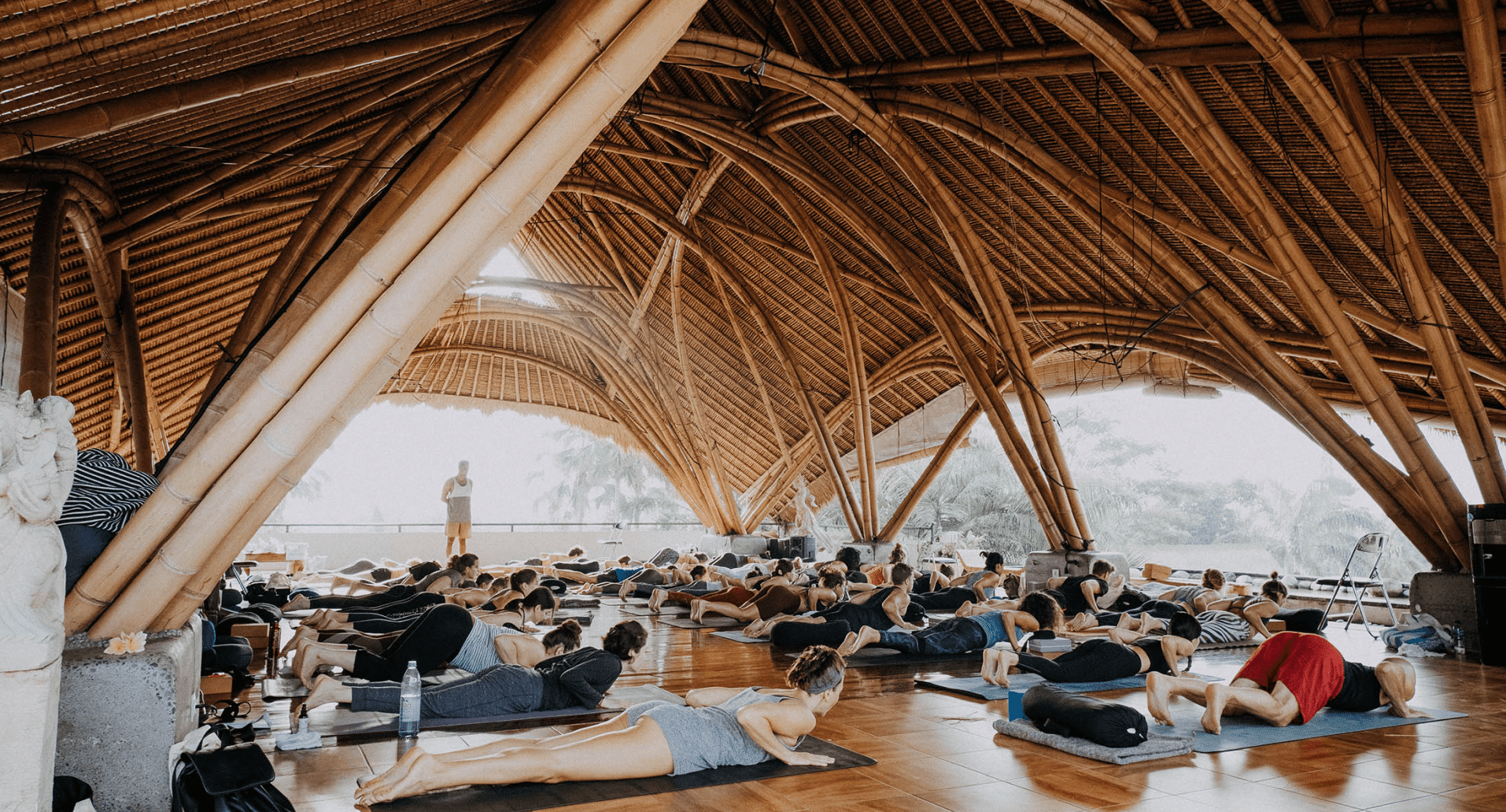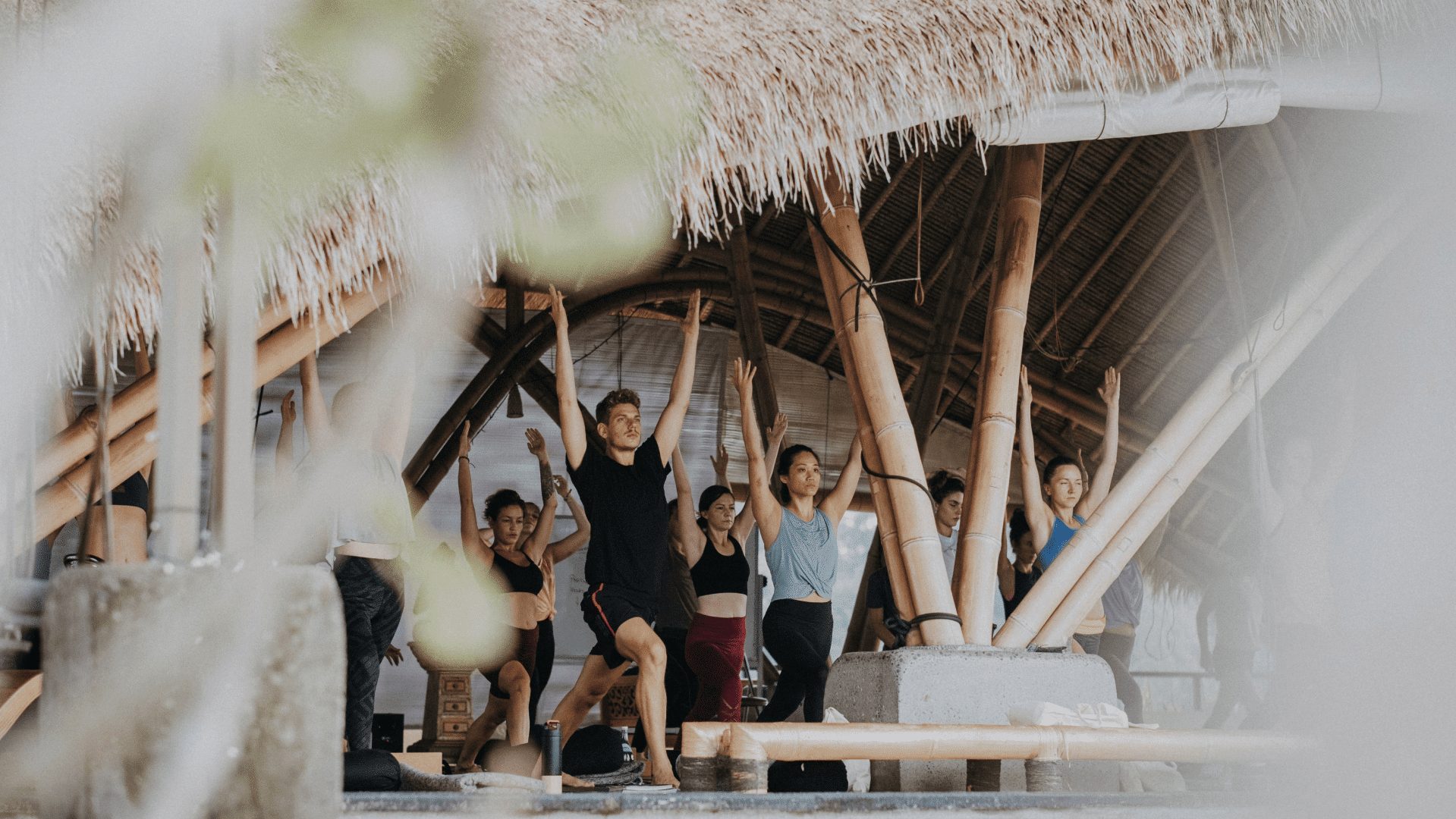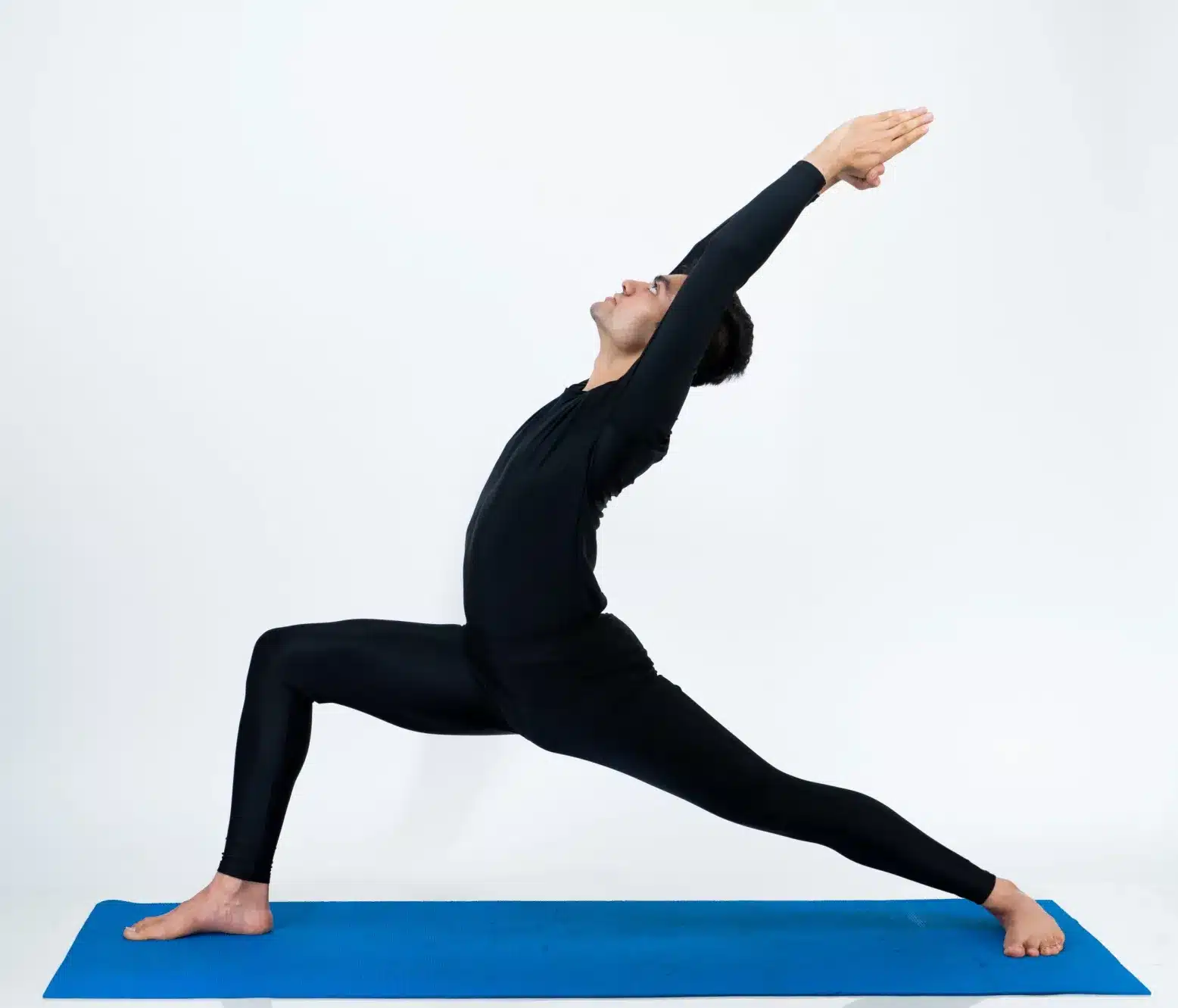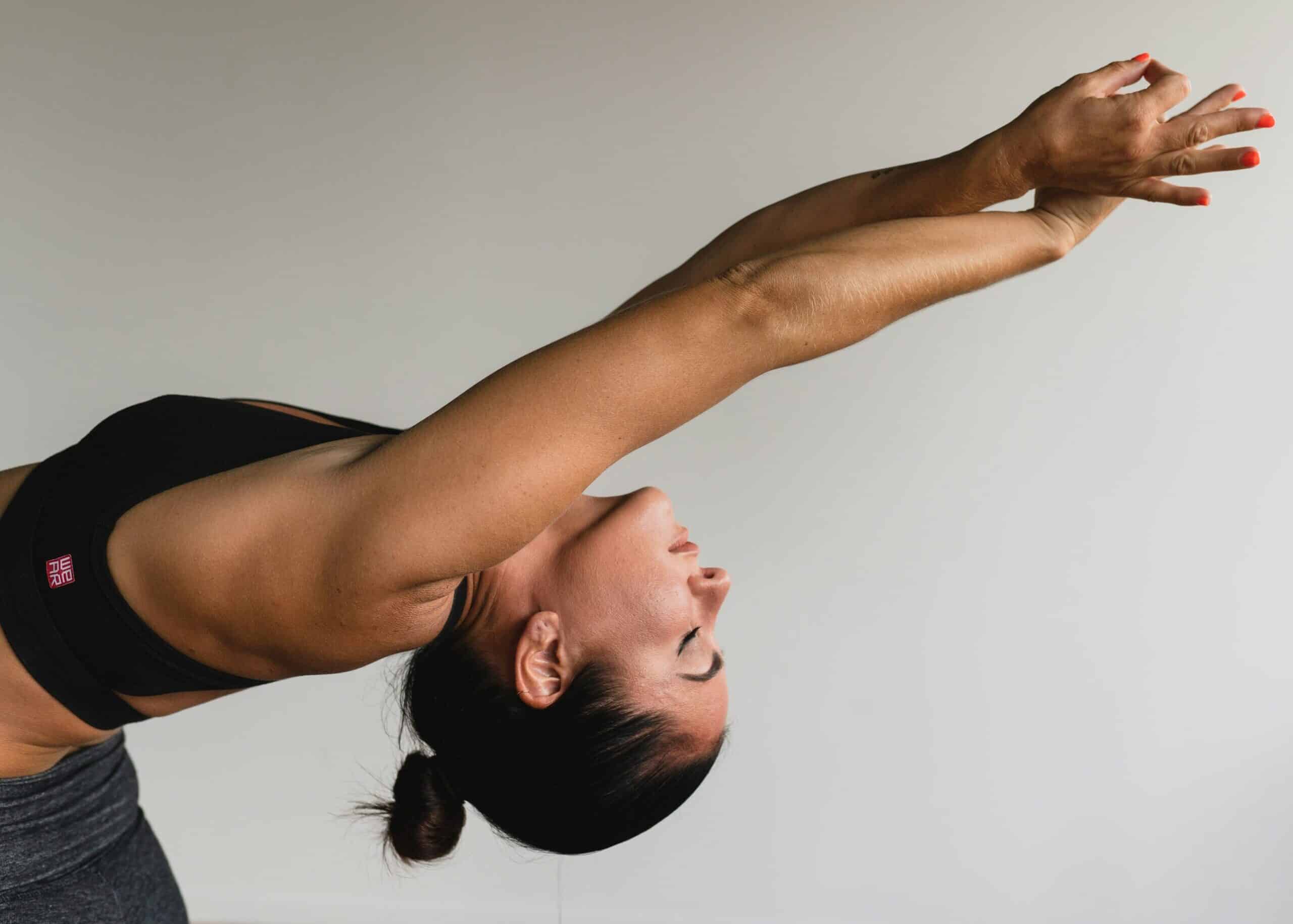
Are you a student and/or teacher of yoga struggling to remember the long complicated Sanskrit names of all the poses and their variations? It is absolutely understandable, Sanskrit is a very complicated language that is also very different from English (and most languages in the west).
In my experience as a student and a teacher, learning is the easiest when you are interested in what you’re learning, and you find logic in the topic you’re studying. I can’t help you with being interested in learning basic Sanskrit, but I can definitely teach you a few things that will make these words seem a bit more accessible.
After reading this article you might gain the confidence to use them more often, or even create new names for your favourite asana variations!
Let’s start at the beginning. A few basic words that should be clear for you before moving on to the complex words.
• YOGA – is derived from the Sanskrit word ‘yuj’, meaning to bind, to attach, and it also means union or communion.
• HATHA – ‘ha’ means ‘sun’, ‘tha’ means ‘moon’. Hatha Yoga is there to balance the solar and lunar energies in the human body.
• ASANA – in yogic terms it means ‘posture’, but the literal meaning of the word is ‘seat’. Originally in yoga, there was only one pose, a seated pose for meditation, so the word for posture stayed, but what postures are changed over the centuries.
• PRANAYAMA – ‘prana’ means ‘life force’, and ‘yama’ means ‘discipline’, ‘control’. Put together, it means ‘breathcontrol’.
• BANDHA – the literal meaning of bandha is ‘bondage’ or ‘bind’. It means a posture where certain body parts or organs are contracted and controlled.
• MUDRA – ‘seal’, ‘mark’, or ‘gesture’.
Now we’re ready to move on to the names of a few basic yoga postures that you will always use/hear in yoga classes.
• TADASANA – ‘tada’ means ‘mountain’, asana means ‘posture’ = Mountain pose
• SAMASTHITI – ‘sama’ means ‘upright’, ‘sthiti’ means ‘stability’ = The pose when we’re standing straight
• BHUJANGASANA = ‘bhujanga’ means ‘serpent’ = Cobra pose
• VIRASANA = ‘vira’ means ‘hero’ = Hero pose
• PADMASANA = ‘Padma’ means ‘lotus’ = Lotus pose
• USTRASANA = ‘ustra’ means ‘camel’ = Camel pose
• SALABHASANA = ‘salabha’ means ‘locust’ = Locust pose
• MATSYASANA = ‘matsya’ means ‘fish’ = Fish pose
• BAKASANA = ‘baka’ means ‘crane’ = Crane pose
• DHANURASANA = ‘dhanu’ means ‘bow’ = Bow pose
• HALASANA = ‘hala’ means ‘plough’ = Plough pose
• BALASANA = ‘bala’ means ‘young’, ‘child-like’ = Childs pose
• SAVASANA – ‘sava’ means ‘corpse’ = ‘corpse pose’
We’ve got the ones where the names can be made up of two or more words that are useful to know when creating new names. Or when you remember one pose name that has it in, so it’ll easily remind you of meaning of another pose name if it has the same word in it. I hope this wasn’t too complicated, but let’s jump onto the examples so it’ll become more clear.
• PADANGUSTHASANA = ‘pada’ means ‘foot’, ‘angustha’ means ‘big toe’ = meaning the pose where you’re touching your big toes = Forward fold with catching the big toes. From now on you’ll know that ‘pada’ means ‘foot and ‘angustha’ means ‘big toe’ in every context.
• TRIKONASANA = ‘tri’ means ‘three’, ‘kona’ means ‘angle’ = Triangle pose. From now on you will know everytime you see the word ‘kona’ in any Sanskrit word, that it means ‘angle’.
• ADHO MUKHA SVANASANA = ‘adho mukha’ means having the face downwards, ‘svana’ means ‘dog’ = Downward facing dog you’ll know the next pose we’re discussing will be something about dogs, cause you now know that ‘svana’ means ‘dog’.
• URDHVA MUKHA SVANASANA = ‘urdhva mukha’ means having the mouth facing upwards, ‘svana’ means ‘dog’ = Upward facing dog.
• PARSVAKONASANA = ‘parsva’ means ‘side’, ‘kona’ means ‘angle’ = Side angle pose. From now on you’ll know that ‘parsva’ means ‘side’ in every Sanskrit word.
• PARSVOTTANASANA = ‘parsva’ means ‘side’, ‘ut’ means ‘intense’, ‘tan’ means ‘extend’, ‘lengthen’, ‘stretch’ = Intense side stretch. From now on whenever you see ‘uttan’ in a Sanskrit word, you’ll know it means anintensee extension.
• UTTANASANA = according to the above this means intense lengthening – in this asana we’re extending the spine = Forward fold
• PRASARITA PADOTTANASANA = ‘prasarita’ means ‘expanded’, ‘extended’, ‘pada’ means ‘foot’ = meaning a pose where the expanded legs are stretched intensely = Wide legged forward fold. From now on you’ll know every time you see the word ‘prasarita’ that it means ‘extended’.
• CHATURANGA DANDASANA = ‘chatur’ means ‘four’, ‘anga’ means ‘limb’ or ‘part of’, ‘danda’ means ‘staff’. = being stiff as a staff on our four limbs = Low Plank
• BADDHA KONASANA = ‘baddha’ means ‘caught’, ‘kona’ means ‘angle’ = Bound angle pose. From now on you’ll know that in every binding pose you can just use ‘baddha’ in front of the pose name and it’ll change the meaning to binding.
• SUPTA BADDHA KONASANA = ‘supta’ means ‘lying down’ = Bound angle pose on the back. You can put ‘supta’ in your vocabulary, and use it for all the Sanskrit words that we’re doing lying on our backs.
• JANU SIRSASANA = ‘janu’ means ‘ knee’, ‘sirsa’ means ‘head’ = Head to the knee. Again two new words to your vocabulary that you’ll use later in connection with other pose names.
• UPAVISTHA KONASANA = ‘upavistha’ means ‘seated’, ‘kona’ means ‘angle’ = seated wide-legged forward fold.
• SALAMBA SIRSASANA = ‘salamba’ means ‘supported’, ‘sirsa’ means ‘head’ = Supported Headstand
• ARDHA CHANDRASANA = ‘ardha’ means ‘half’, ‘Chandra’ means ‘moon’ = Half-moon pose. From now on you’ll know every time you see ‘ardha’ in a word that it means ‘half’
• EKA PADA RAJKAPOTASANA = ‘eka’ means ‘one’, ‘pada’ means ‘foot’, ‘raj’ means ‘king’, ‘kapota’ means ‘pigeon’ = One legged king pigeon pose. New vocabulary words: eka = one, kapota = pigeon
The Sanskrit words with stories:
• VIRABHADRASANA – Virabhadra was a warrior who has been created by Siva from his hair, and led his army with success. All three Warrior poses in yoga are dedicated to his name.
• HANUMANASANA – named after the monkey god, Hanuman, who stepped from the southern tip of India to Sri Lanka with one step, hence they named Splits after him.
• MARICHYASANA – This pose is dedicated to the son of Brahma, Marichi = Seated Twists
• PURVOTTANASANA – ‘purva’ literally means ‘east’, ‘uttan’ means ‘instense stretch’. The front side of the body is considered as east, so this means the intense stretch of the front body = Upward Plank.
• PASCHIMOTTANASANA – ‘paschima’ literally means ‘west’. If east was the front part of the body, west is the back part of the body, so this means an intense stretch of the back of the body = Seated forward fold
• SALAMBA SARVANGASANA = ‘salamba’ means ‘supported’, ‘sarva’ means ‘all’, ‘whole’, ‘anga’ means ‘body’ = A supported pose where the whole body is benefiting from the exercise = Shoulderstand
A little vocabulary of the words that are useful to remember when trying to create new words, or when trying to remember what certain asana names mean literally:
Pada = foot
Angustha = big toe
Kona = angle
Svana = dog
Parsva = side
Ut = intense
Tan = stretch
Utthita = extended
Prasarita = extended
Baddha = bound
Supta = lying down
Janu = knee
Sirsa = head
Upavistha = seated
Salamba = supported
Sarva = all, whole
Anga = body
Ardha = half
Eka = one
Kapota – pigeon
Hasta = hand
I hope that this article was helpful for you, if you’ve got any questions, please don’t hesitate to ask in comments or write an email to julia@yogaeastwest.com and I’ll do my best to help.
It has to be said that these aren’t the only words that are used in yogic contexts, although I was trying to gather the most important ones that you’ll definitely come across if you’re doing yoga regularly, let alone if you’re considering becoming a teacher.
If this is the case, head over to our trainings page and check out our upcoming trainings where we’ll go deeper into the names and practices of all asanas, and have more space and time to go into deeper studies. I’d love to see you there.
Namaste















